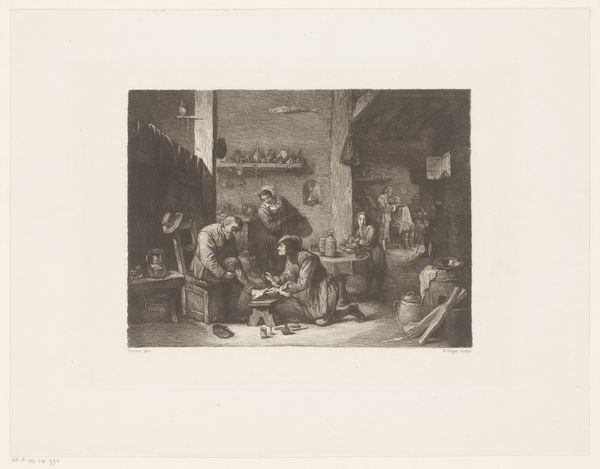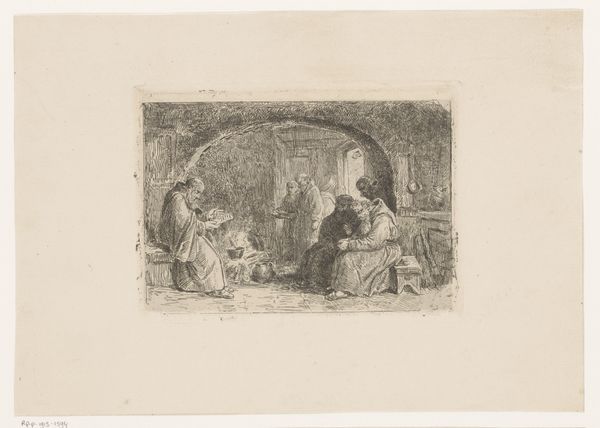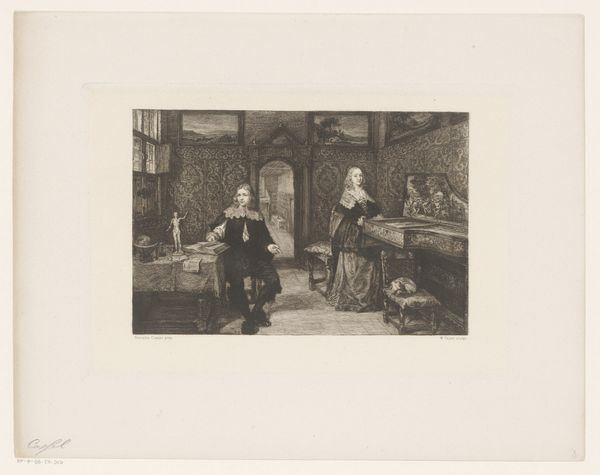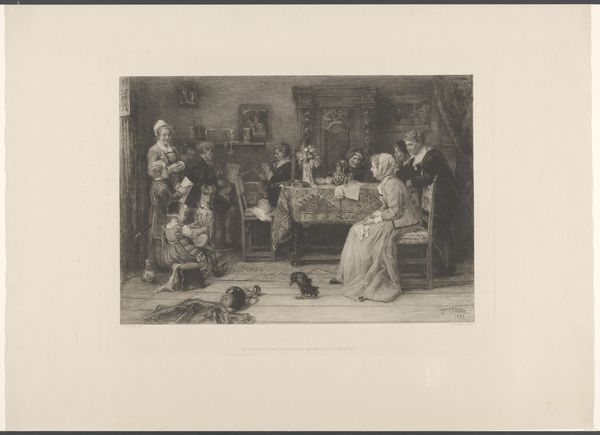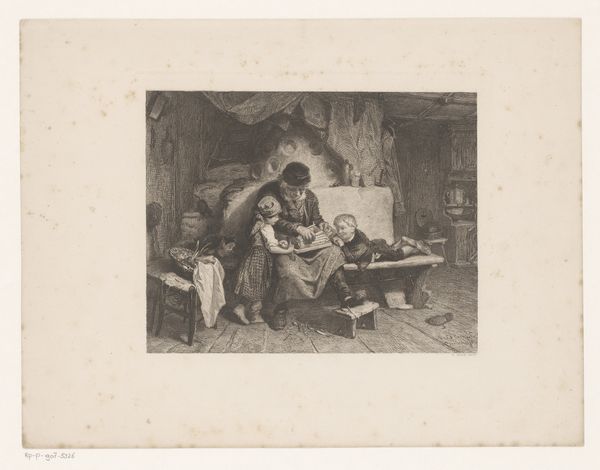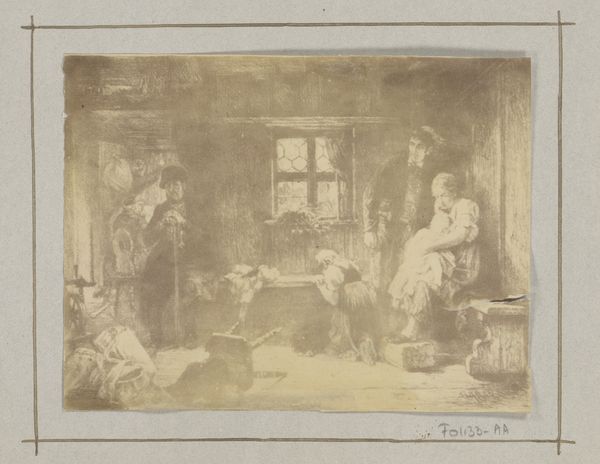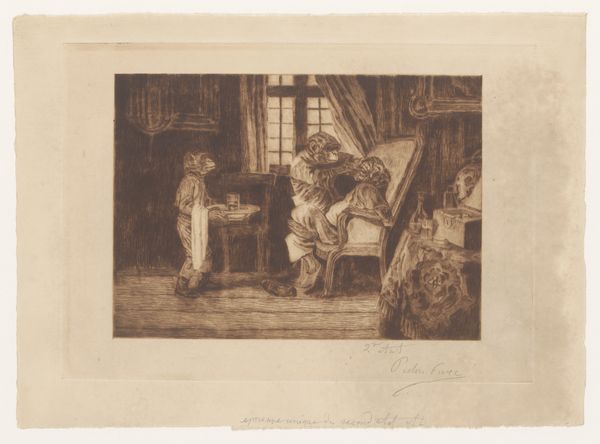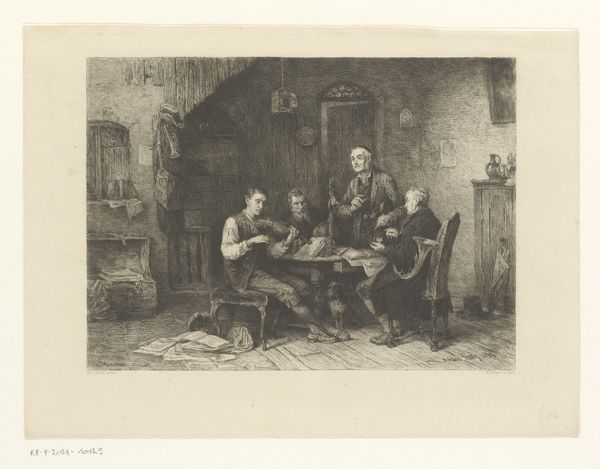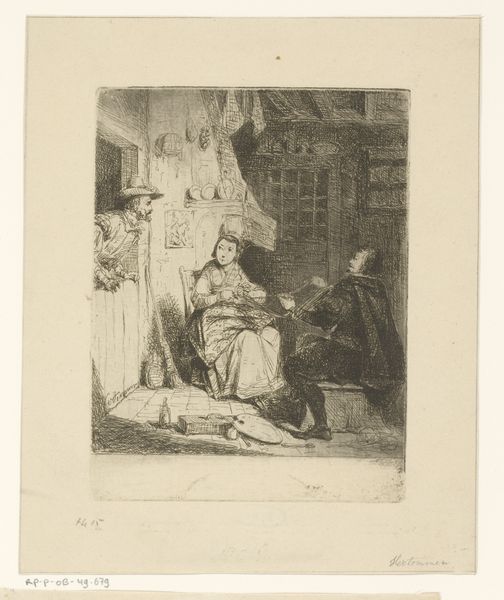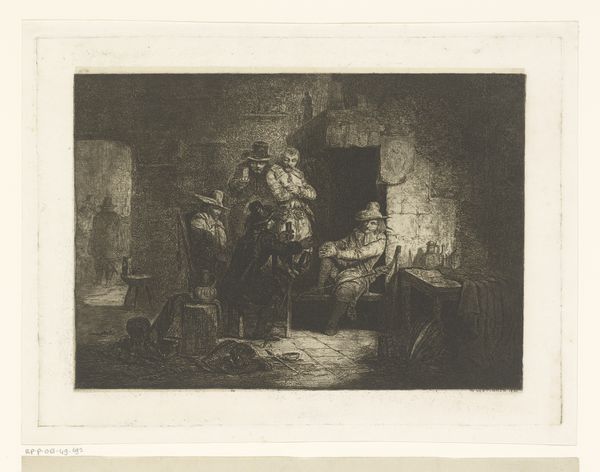
Dimensions: height 197 mm, width 240 mm
Copyright: Rijks Museum: Open Domain
Editor: This is "Mourning Family in an Interior," an etching by William Unger created sometime between 1869 and 1889. The mood is so heavy, like you can feel the sorrow permeating the space. What do you see in this piece? Curator: The scene depicts an intimate moment of grief within a family. Considering the historical context, particularly the late 19th century, family loss was often shaped by socioeconomic factors, from healthcare access to working conditions. The woman with the child becomes a figure that represents the precarity of life at the time. Editor: So the image connects to societal circumstances beyond just personal grief? Curator: Absolutely. Look at the division of space. The older woman sits removed from the central group, almost guarding the scene. This visual segregation suggests the generational impact of loss and trauma, especially for women who were often relegated to domestic roles while simultaneously burdened with emotional labor. Editor: It’s like the grief has been inherited. The expressions are very subtle. Curator: Precisely. Unger’s realism here, combined with romantic elements, gives it such emotional resonance. What could be seen in Unger’s social context related to industrial development and the shift in family structures? The composition pushes us to ask what this intimate image reflects back about power structures of the time. What does mourning mean when placed next to labor, class, and gender? Editor: I didn't think about the social commentary embedded in the familial relationships before. Thanks for expanding my view. Curator: It's about understanding how individual experiences are always intertwined with broader socio-political narratives. By acknowledging these intersectional elements, we can truly appreciate the power and the relevance of Unger's work.
Comments
No comments
Be the first to comment and join the conversation on the ultimate creative platform.
